In the 1880s, the bustle made a comeback. Last seen in the previous decade, the bustle of the early-to-mid 1870s supported puffs and swags of fabric, creating a rounded fullness which often ended with a short train. Though exaggerated, this silhouette still had a certain softness. When the bustle returned in the 1880s it was more angular, extending almost at a right angle from the waist. This 1885-88 blue silk afternoon gown demonstrates the rigid shape of the 1880s bustle silhouette.
Given the shape and size of the 1880s bustle, you'd think it was supported by a large, heavy apparatus. Actually, the 1880s bustle was usually quite small. This c. 1885 bustle is about 6 1/2 inches wide and 13 inches long. Made of metal coils covered with tan cotton and secured at the waist with a twill ribbon and metal prong buckle, this oddly shaped device was used to create the angular 1880s bustle silhouette.
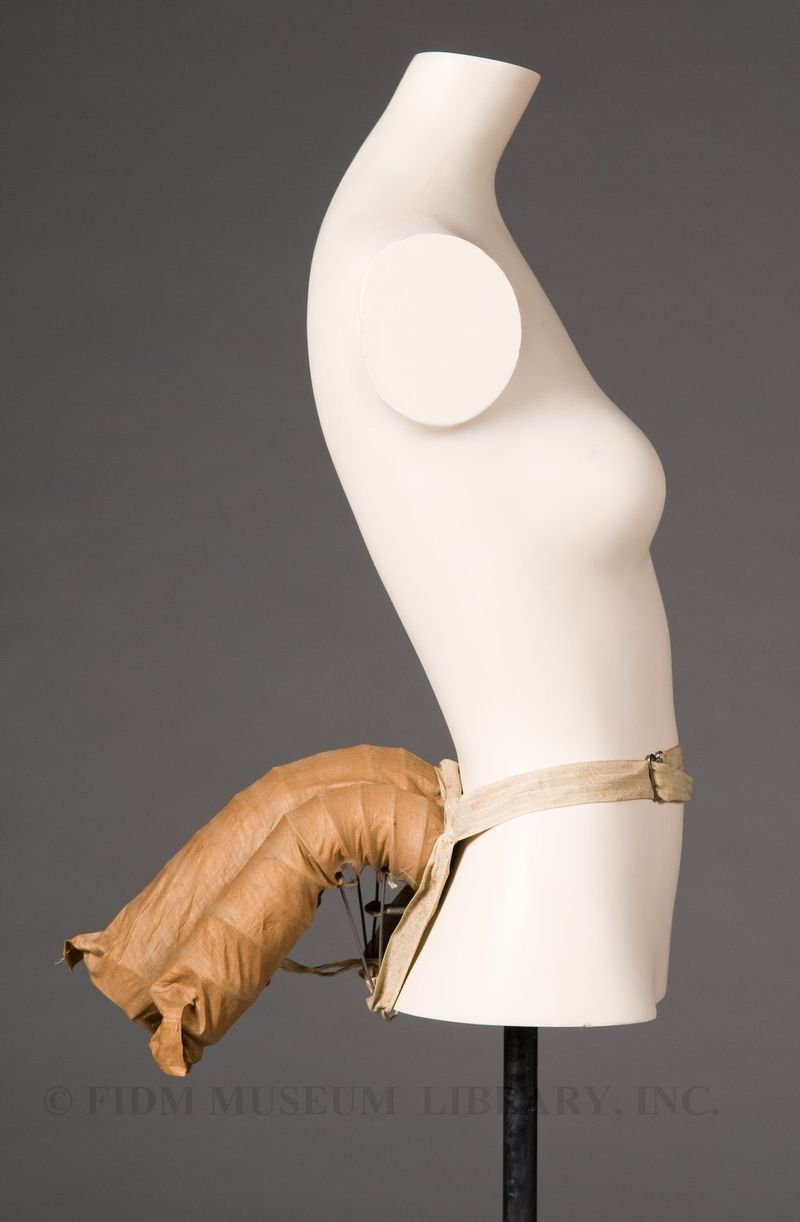 Bustle
Bustle
Cotton/wire
c. 1885
Museum Purchase
2005.5.174
In the side-view above, you can clearly see three wire supports under the fabric-covered tubes. These coils are collapsible and were probably intended to make sitting easier. This doesn't explain what would happen with the cotton/wire tubes, but perhaps they were also designed to collapse on sitting, springing back into shape on standing. Many manufacturers developed collapsible steel bustles, including this c. 1884 model called The New Phantom.
Fashion periodicals of the time frequently refer to bustles made of horsehair or pads of stiff fabric. For the women on a limited budget, these types of bustles could be made at home or purchased fairly cheaply. One satirical article from 1885 suggested that the best bustles were made of newspaper: A great many ladies will wear no other kind, because when the papers are properly wrapped around a piece of bailing twine it will retain its shape no matter how severely crushed.1
Bustles made of industrial materials, like the wire and cotton bustle pictured above, had to be purchased. An 1885, a reporter for the Massachusetts Ploughman (Massachusetts was then the center of industrialized textile production) visited a bustle and hoopskirt manufacturer run by Malcolm Smith.2 According to Smith, a skilled worker could make 5 dozen hoopskirts of fabric-wrapped wire and linen tape each day. In contrast, an experienced bustle-maker could only make 1 dozen bustles each day, as each bustle had to be carefully contoured into the desired shape.
Though not clearly described in the article, Smith's bustles were apparently made of flexible wire mesh. Wire mesh bustles became popular because they were both lighter and cooler than bustles made from horsehair or padded fabric. In the 1880s, a variety of groups attempted to rationalize women's fashion, i.e. reduce the number of undergarments and rethink the constricting silhouette. Jumping on this bandwagon, undergarment manufacturers often used the words health and/or reform in describing their products. According to its label, this wire mesh bustle was simply called "The Health."
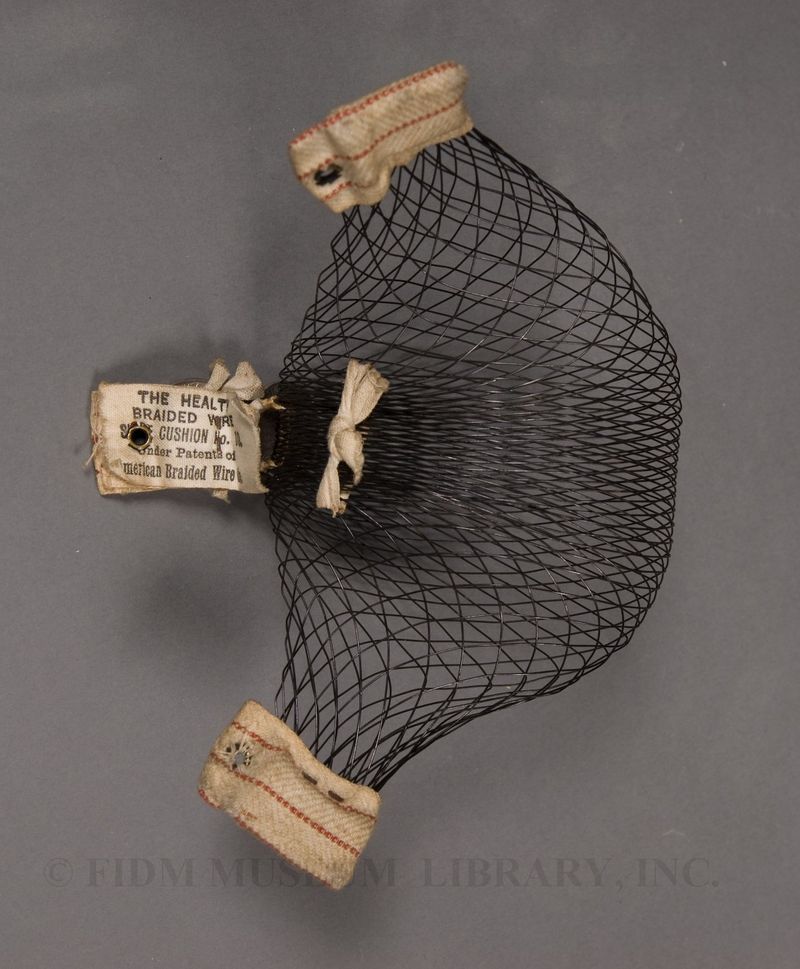 "The Health" wire bustle (pictured upside down)
"The Health" wire bustle (pictured upside down)
1888-1890
Museum Purchase
2003.5.56
The grommets seen on the white/red tabs might have been used to shape the bustle. A June 22, 1884, article in Harper's Bazaar describes a steel bustle that can be pulled into a different curve using ties. The side tabs on our bustle could have been threaded with a tape or ribbon and tied into the desired curve. Alternately, they may have been used to attach the bustle to the waist.
Inevitably, the exaggerated shape of the 1880s bustle led to jokes and satire. This 1887 image is from an article that straddles the line between satire and genuine innovation. Titled "Comfort and Style Too," the article suggests that incorporating a stool into the bustle apparatus would prevent "the fatigue of long standing or walking." Certainly innovative, but probably much heavier and less maneuverable than a modest wire bustle.
Image appeared in Scientific American, 15 June 1887: 36.
1 "Facts About Bustles." Massachussets Ploughman and New England Journal of Agriculture. 13 June 1887: 4.
2 "The Fashions." Massachussets Ploughman and New England Journal of Agriculture. 5 Sept. 1885: 4.

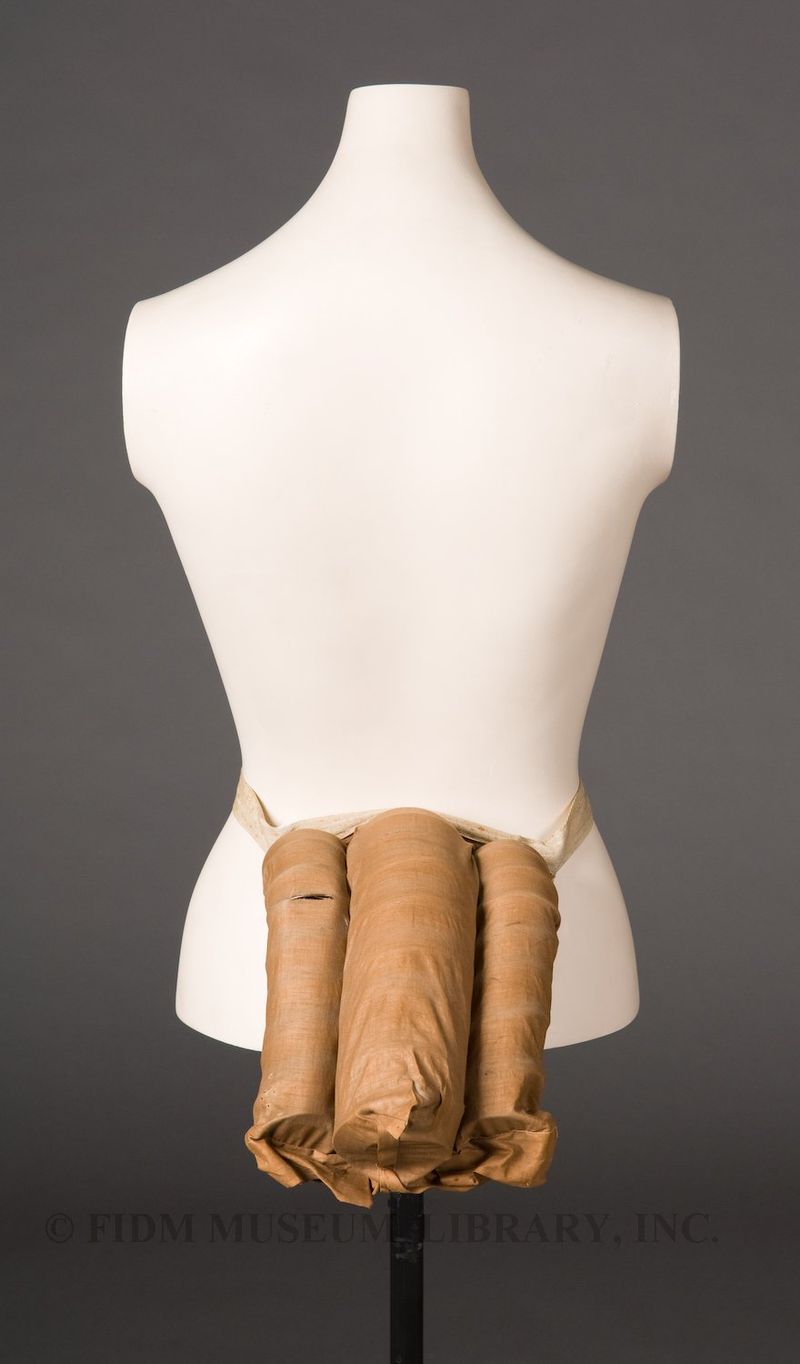
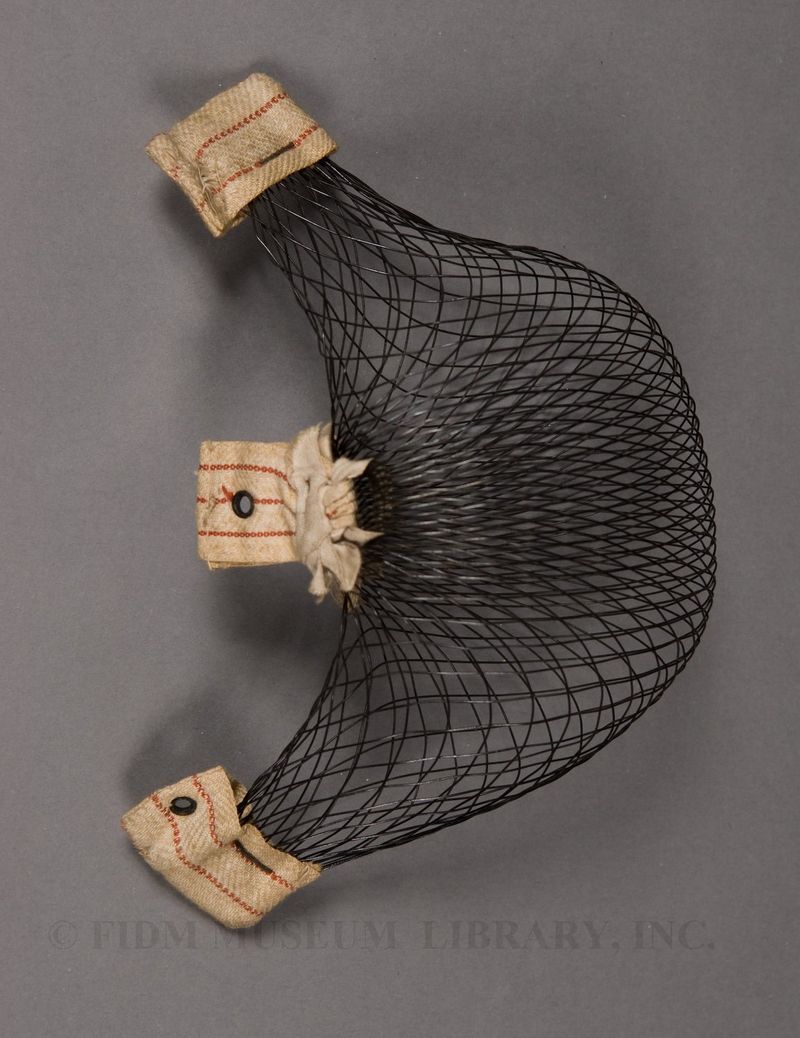
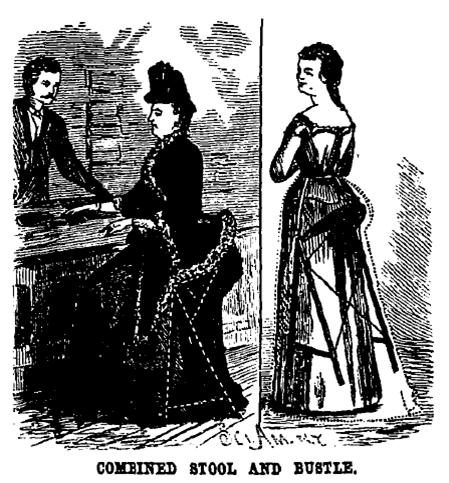
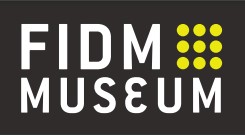
Well, it’s perfect for tourists going to Egypt.